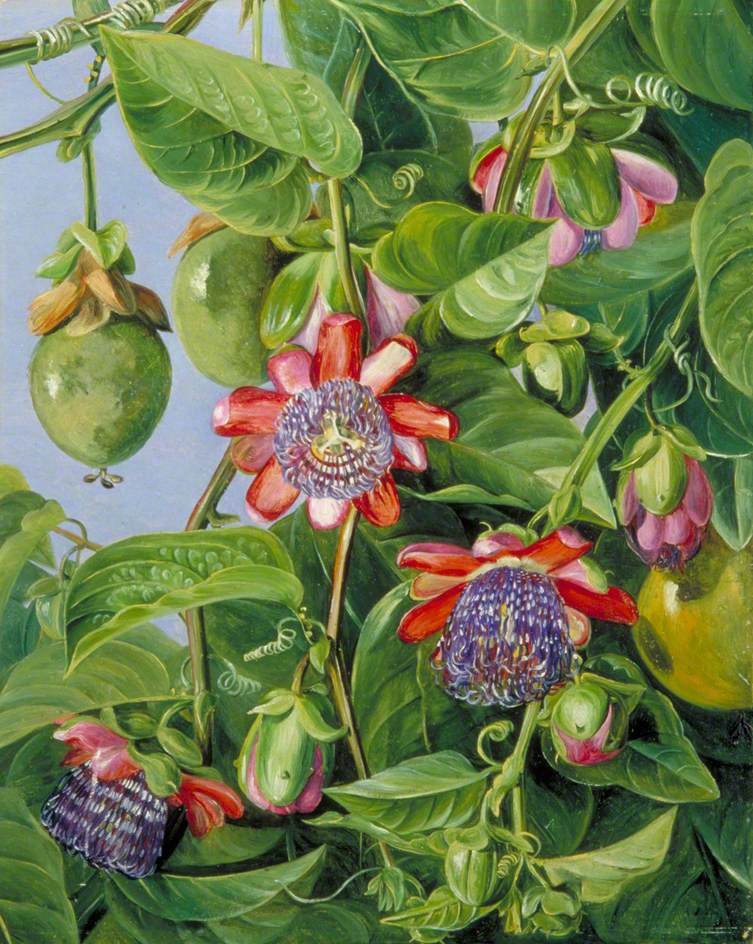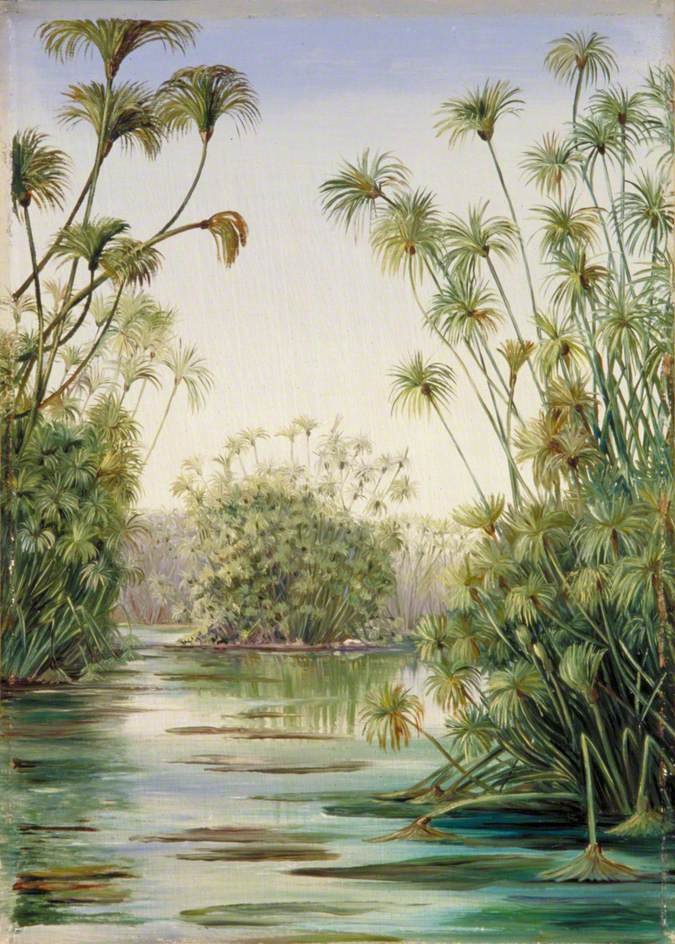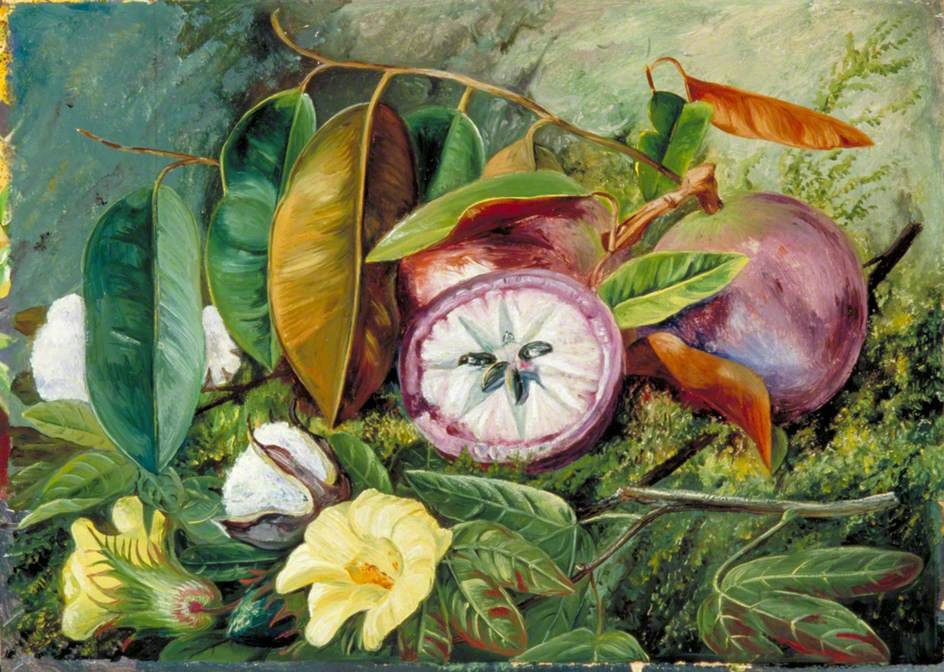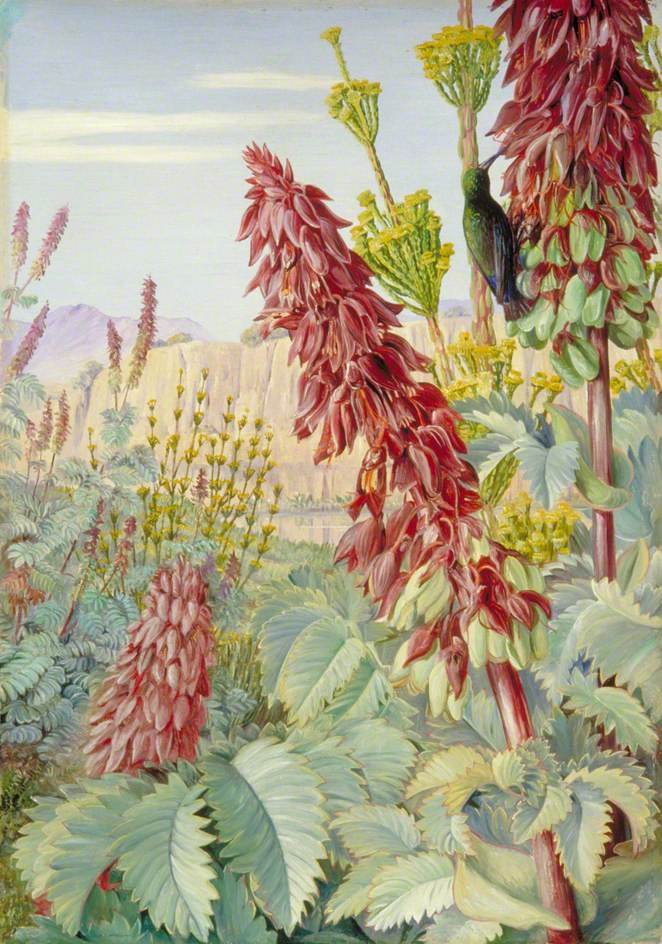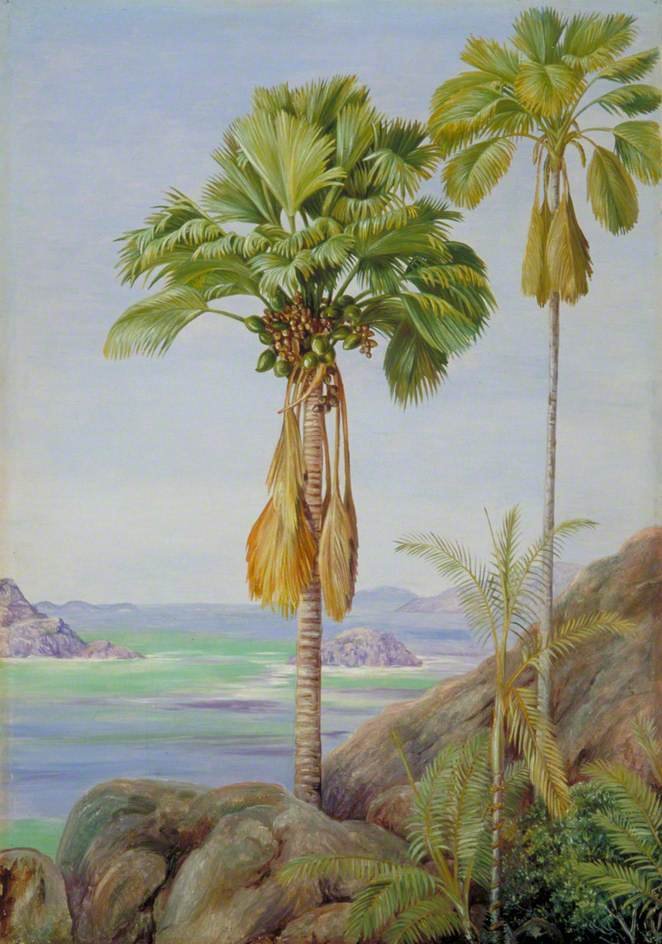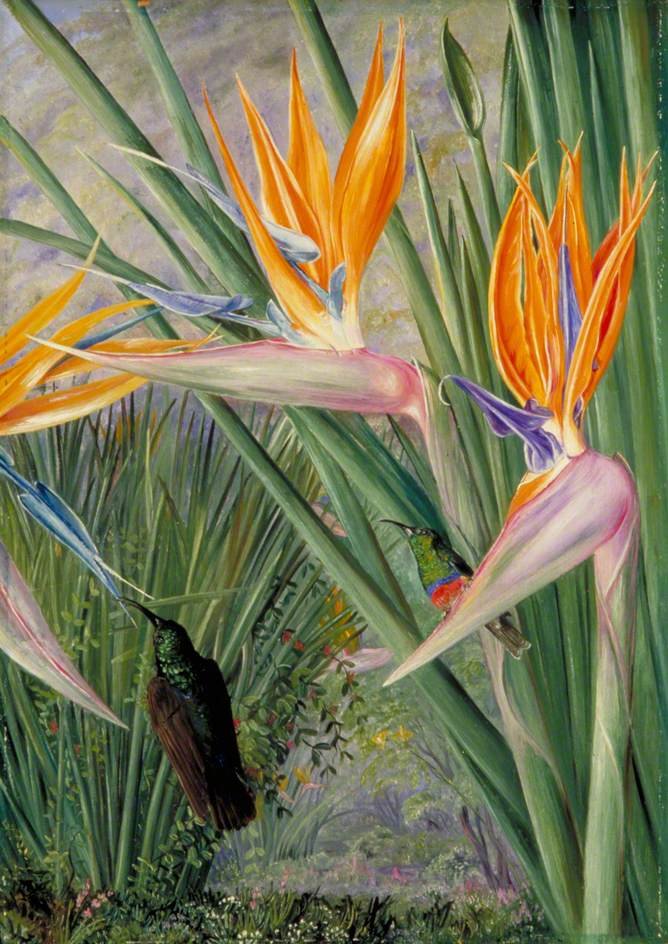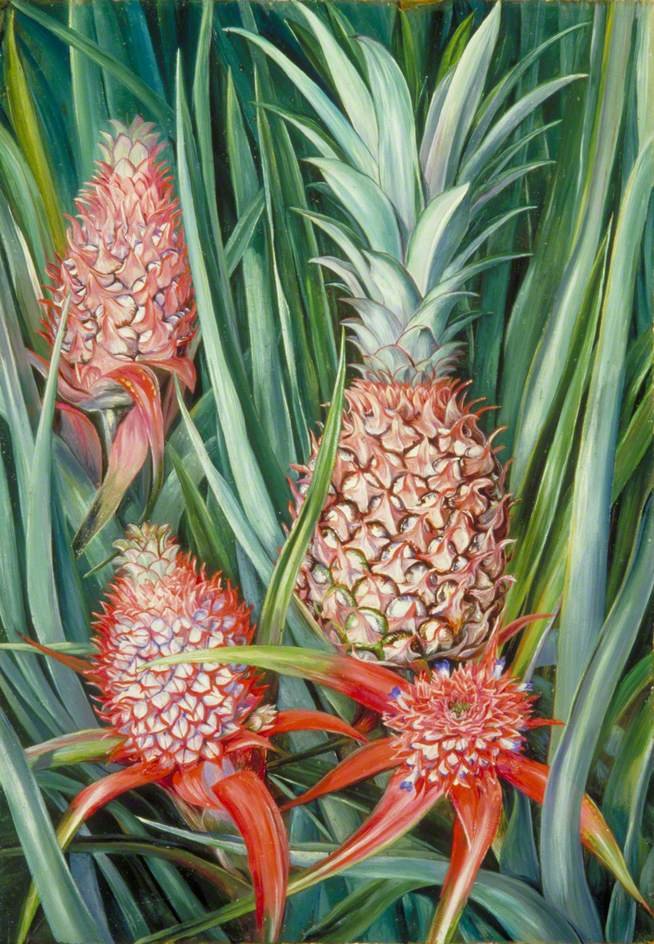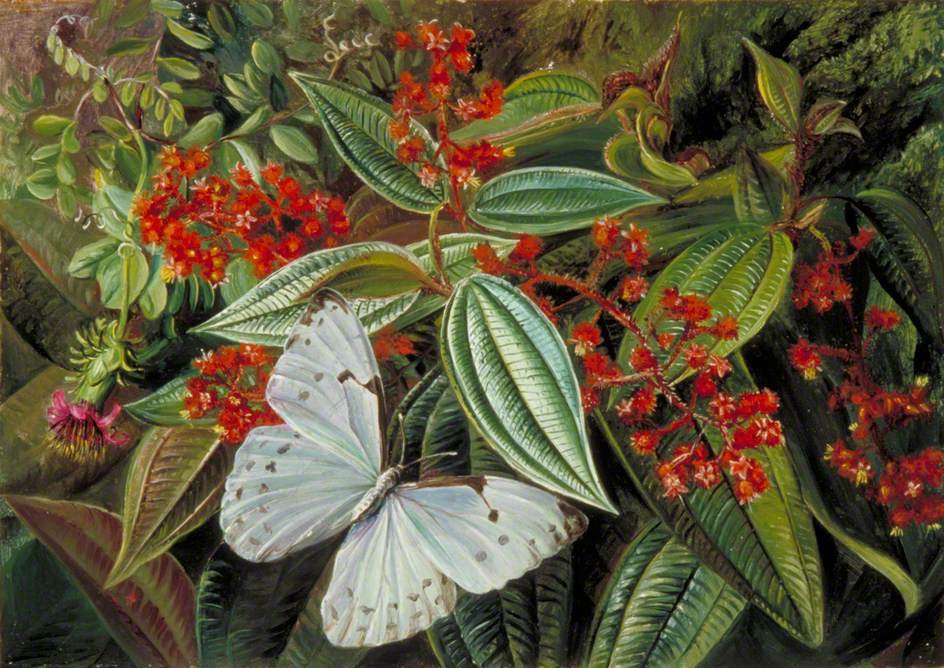The Vibrant World of Marianne North
OSGF
Born on this day in 1803, botanical artist and naturalist Marianne North’s adventurous life is well documented. Early childhood to the events that informed the later stages of her career are laid out in Recollections of a happy life, being the autobiography of Marianne North. Through her personal account, we can gain insights into how her early life and relationships influenced her expansive artistic pursuits.
One insight made apparent early on in her autobiography is the close relationship with her father, Frederick North, whom she described as, “the one idol and friend of my life.” Marianne primarily spent winters with him along with the rest of her family in their family home in Hastings while moving between homes in the idyllic countryside of Lancashire and Rougham during the summers. Spring was spent in London where she was introduced to family friend and then director of Kew Gardens, Sir William Hooker. As a child, she also traveled with her father around the country while he served as the Liberal MP. On an annual visit from Hastings to Norfolk the two would stop at the Cambridge library where in one instance she checked out the illustrated volumes of British fungi by Anna Hussey, another botanical artist we’ve covered on the blog.
Photo via National Portrait Gallery, London. CC BY-NC-ND 3.0. Unknown Photographer.
Marianne’s aristocratic upbringing first led her in the direction of singing, studying under the vocal trainer Charlotte Helen Sainton-Dolby. This was short-lived as she was plagued by stage fright during solo performances writing, “I could not keep myself from shaking all over.” Moving out of the spotlight, that same year she began to take lessons in flower painting from a Dutch instructor Miss van Fowinkel, and later by Bartholomew, a botanical painter connected to the royal court. On one visit to Kew, family friend William Hooker gifted Marianne cuttings of Amherstia nobilis, dubbed the ‘Queen of Flowering Trees.’ She along with the rest of Kew visitors was witnessing the first instance of it flowering in Europe. This event made a strong impression on Marianne, writing its flowering, “made me long more and more to see the tropics.”
Shortly after this instance, Marianne’s father passed away. This was during one of their many excursions to Europe and served as a critical turning point in her life. Having already lost her mother in 1855, and with both of her siblings settled down, Marianne sold the family home and, with her father’s hefty inheritance, she dedicated herself to traveling the globe in pursuit of her botanical art. Through these travels Marianne would reach a total of 17 countries spanning six continents, painting the flora, landscapes, and features of each. Marianne even traveled to Australia per the recommendation of Charles Darwin, who was gifted some of her paintings upon her return. It should be noted that while these travels were impressive for a woman of this time period, they were made accessible to her by the product of British colonial outposts.
A map outlining Marianne’s travels from Recollections of a happy life, being the autobiography of Marianne North.
To call Marianne a botanical illustrator may have made some other artists of that time (or today) bristle. Though she was raised in the Victorian Era, her techniques were unconventional for the period. For one, Marianne painted the plants she saw in their native environment, including the landscape and fauna that interacted with them. This less common practice didn’t conform to the scientifically-geared illustration techniques of the 19th century but did help to inform the growing interest in the broader evolved relationships between plants and animals. Another reason her works stood out was quite literally because of the paints she used. During the mid-18th and early 19th centuries, artists were traditionally using watercolors, especially in botanical works. Marianne took the liberty of using oils instead (though she began with watercolors), which made each painting more vibrant and colorful.
Images via WikiArt under Common Domain.
Marianne is noted as being the first person of European descent to illustrate this species.
Nearly 1,000 species are depicted in Marianne’s paintings. Her keen observations and intrepid travels resulted in five plant contributions, all named in her honor. One of note, Kniphofia northiana, is a common garden plant we know today, red hot poker which she witnessed and depicted in South Africa. Another is Nepenthes northiana, which grows in the mountains of Sarawak, Borneo in limestone soils.
Today, a staggering 832 of Marianne’s illustrious paintings remain covering the walls of the namesake gallery at Kew Gardens which was started at her request by then-serving director, Joseph Dalton Hooker. She funded the entire project and enlisted the help of her friend, Scottish architect James Fergusson to execute her vision. The gallery opened in 1881 where it remains unaltered and serves as, “the only permanent solo exhibition by a female artist in Britain.”
References:
Agnew, Eadaoin. “‘An Old Vagabond’: Science and Sexuality in Marianne North’s Representations of India.” Nineteenth-Century Gender Studies, no. 7.2, 2011.
Buckley, Julia. “Margaret Meen (Fl. 1775–1824), Sarah Anne Drake (1803–1857), and Marianne North (1830–1890): Three Botanical Illustrations from Women with Connections to the Royal Botanic Gardens, Kew.” Women in the History of Science: A Sourcebook, edited by Hannah Wills et al., UCL Press, 2023, pp. 227–34.
Higgins, Adrian. “Meet Marianne North, Who Defied Victorian Convention to Paint the World’s Jungles.” The Washington Post, WP Company, 7 Mar. 2017, www.washingtonpost.com/lifestyle/home/meet-marianne-north-who-defied-victorian-convention-to-paint-the-worlds-jungles/2017/03/06/b8169fa0-0297-11e7-ad5b-d22680e18d10_story.html.
“Marianne North.” BOTANICAL ART & ARTISTS, www.botanicalartandartists.com/about-marianne-north.html. 2023.
McHale, Ellen. “Things You Should Know about Marianne North.” Kew, 8 May 2020, www.kew.org/read-and-watch/marianne-north-botanical-artist.
North, Marianne, and Janet Catherine Symonds. Recollections of a Happy Life: Being the Autobiography of Marianne North. Macmillan and Co., 1894.




